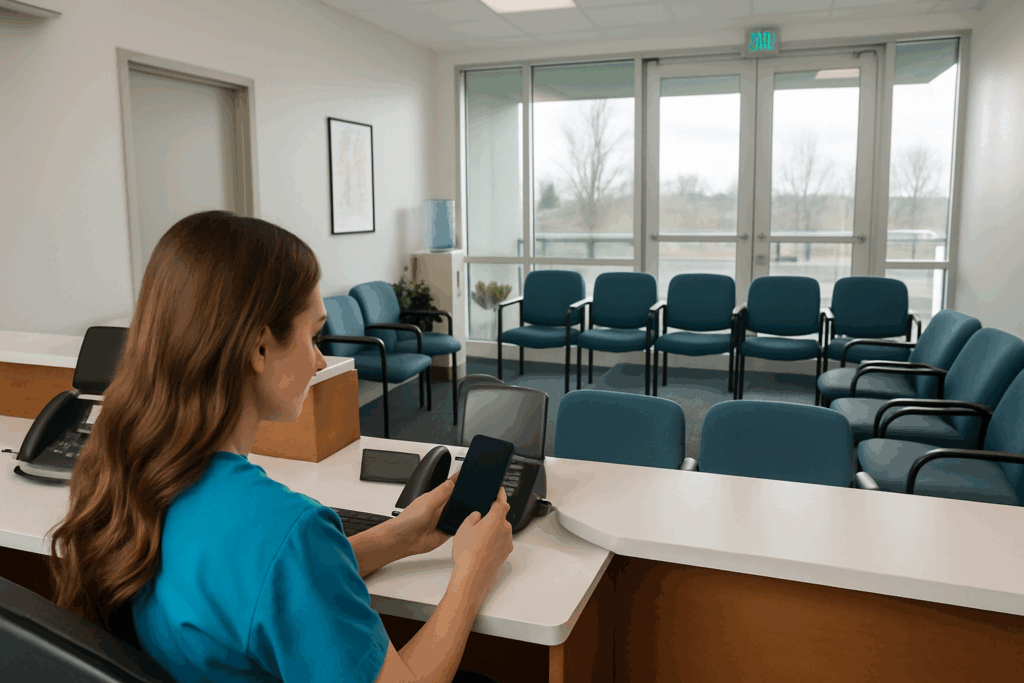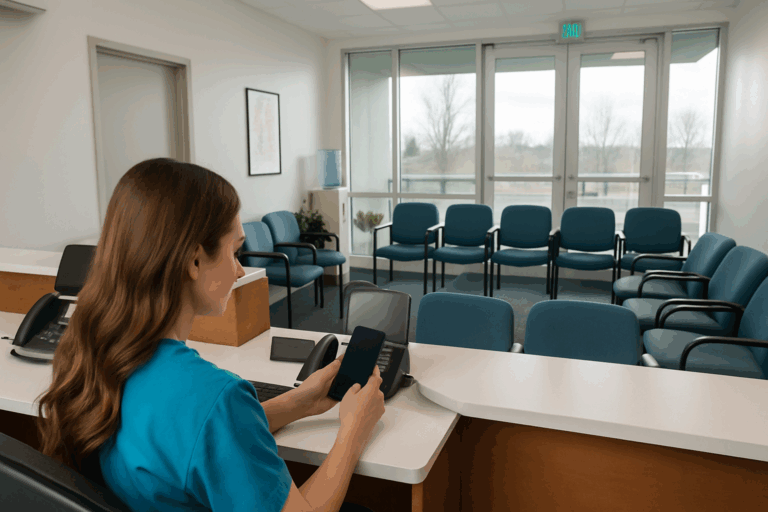Missed appointments aren’t just about forgetfulness. They’re directly tied to how easily patients can interact with your practice. Outdated communication channels, such as voicemails, phone calls, and manual scheduling, create barriers that significantly impact appointment adherence.
How Integrated Communication Makes the Difference
When communication is fragmented – voicemails here, text reminders there – patients become confused or disengaged, leading directly to higher no-show rates. Today’s patients overwhelmingly prefer text messaging and online scheduling, with 89% favoring online appointment booking according to an Experian Health State of Patient Access Survey. Small practices using integrated communication platforms have experienced a 25% reduction in no-show rates and a remarkable 50% decrease in appointment-related phone calls.
Here’s a practical example: Imagine a busy parent receiving an easy-to-respond text reminder versus a voicemail they might never check. The convenience of integrated systems greatly reduces friction, prompting timely patient actions.
An integrated communication stack combines secure texting, unified scheduling, and automated reminders into a cohesive system. This streamlined interaction significantly improves patient adherence by removing common barriers like confusion, inconvenience, and forgetfulness.
Experian also noted that 80% of patients explicitly state they prefer scheduling appointments at any time, from home, or via a mobile device. Additionally, 71% of providers now consider self-scheduling an urgent priority, highlighting the growing importance of digital tools and their direct connection to patient adherence and satisfaction.
Why No-Shows Hurt More Than You Think
Each missed appointment is costly, both financially and operationally. Industry estimates place the average loss from a single no-show between $100 and $200. The cumulative impact quickly compounds, diverting essential resources and reducing your practice’s overall efficiency and revenue.
Moreover, consistent no-shows create stress and frustration among your administrative and clinical teams, reducing morale and productivity.
Your Path to Reducing No-Shows
Addressing no-shows effectively requires targeted action. Here are essential, practical steps your practice can take immediately:
1. Unified Scheduling Platforms:
Offer patients the convenience of self-scheduling, rescheduling, or canceling appointments online, which significantly reduces scheduling friction and minimizes missed appointments.
2. HIPAA-Compliant Texting:
Automated text reminders significantly boost appointment confirmations, allowing patients to confirm, reschedule, or cancel appointments proactively and easily.
3. Integrated Communication Stack:
Combining all patient communication tools – text messages, calls, and scheduling – into one unified system ensures consistent messaging, reduces confusion, and maximizes patient engagement.
Ready to Improve Your Communication?
If you’re still relying on manual scheduling or phone-based reminders, you might unintentionally contribute to your no-show problem. Embracing an integrated communication stack aligns your practice with patient preferences and significantly reduces costly appointment misses.




